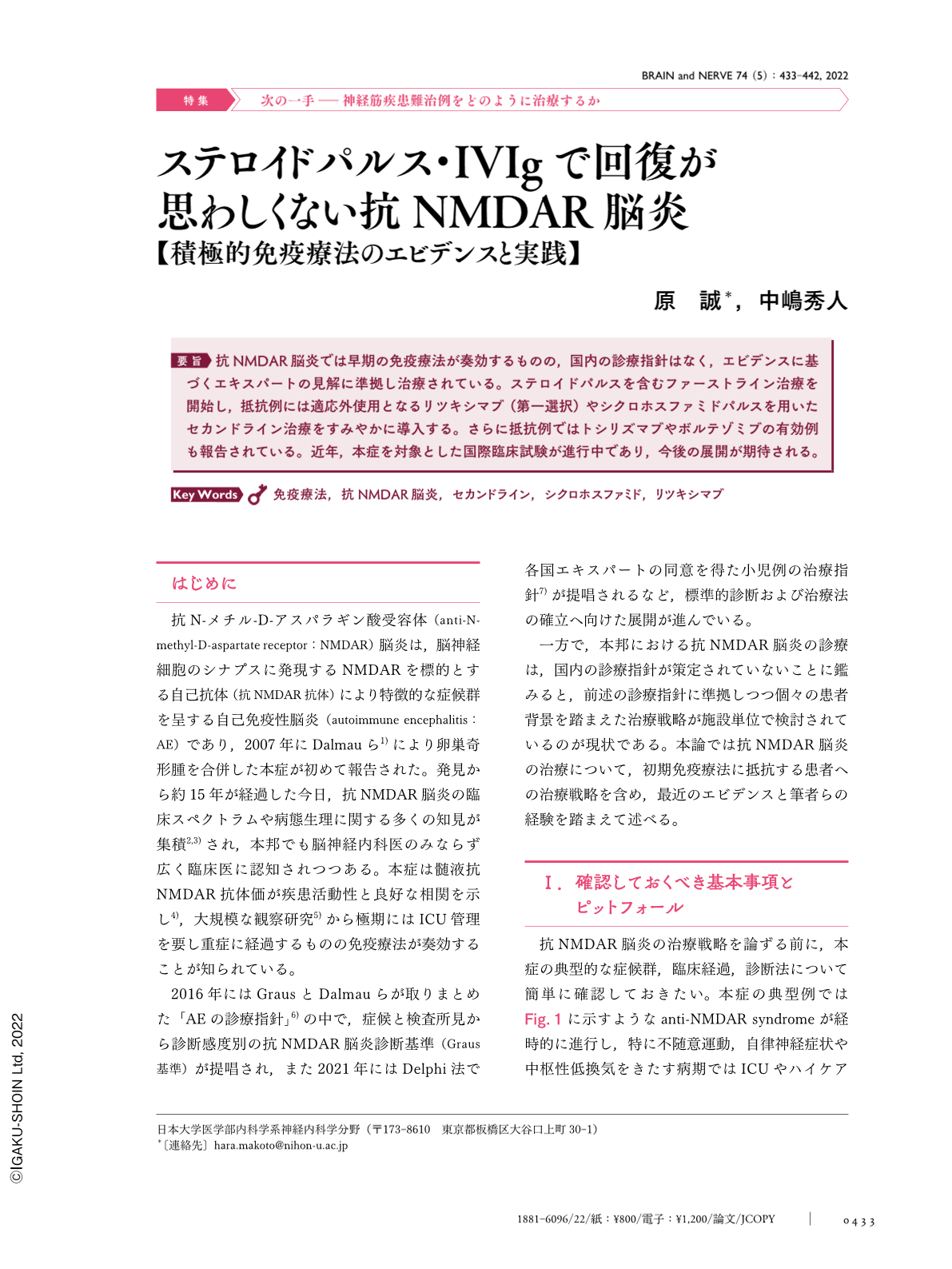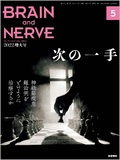Japanese
English
- 有料閲覧
- Abstract 文献概要
- 1ページ目 Look Inside
- 参考文献 Reference
抗NMDAR脳炎では早期の免疫療法が奏効するものの,国内の診療指針はなく,エビデンスに基づくエキスパートの見解に準拠し治療されている。ステロイドパルスを含むファーストライン治療を開始し,抵抗例には適応外使用となるリツキシマブ(第一選択)やシクロホスファミドパルスを用いたセカンドライン治療をすみやかに導入する。さらに抵抗例ではトシリズマブやボルテゾミブの有効例も報告されている。近年,本症を対象とした国際臨床試験が進行中であり,今後の展開が期待される。
Abstract
Anti-N-methyl-D-aspartate receptor encephalitis (NMDARE) is a well-defined autoimmune encephalitis that is responsive to early intensive immunotherapy. Recent international consensus regarding treatment of NMDARE provides a practical treatment algorithm for immunotherapy escalation, while considering a patient's age, disease severity, and other background information. First-line immunotherapy, which includes an intravenous (IV) corticosteroid pulse with the addition of either intravenous immunoglobulins (IVIg) or plasma exchange, should be offered to all NMDARE-diagnosed patients as soon as possible. In cases where insufficient improvement follows a repeat of the first-line combination therapy (assessed on day 14 after the initial treatment), second-line immunotherapy comprising rituximab or an IV cyclophosphamide pulse (IVCPA) is considered. Per the recent expert consensus, rituximab is preferred to IVCPA as the second-line drug of choice, although the use of either drug in the treatment of NMDARE is off-label. Most patients show gradual improvement in the first few weeks following the introduction of second-line therapy, although repeated and alternating use of both drugs is often required. Some patients, whose NMDARE was refractory to the aforementioned therapies, have also been successfully treated with tocilizumab or bortezomib. Moreover, several international clinical trials involving rituximab, inebilizumab, bortezomib, and rozanolixizumab in the treatment of autoimmune encephalitis (AE, which includes NMDARE) are being conducted to establish high-grade evidence for the treatment of AE.

Copyright © 2022, Igaku-Shoin Ltd. All rights reserved.


